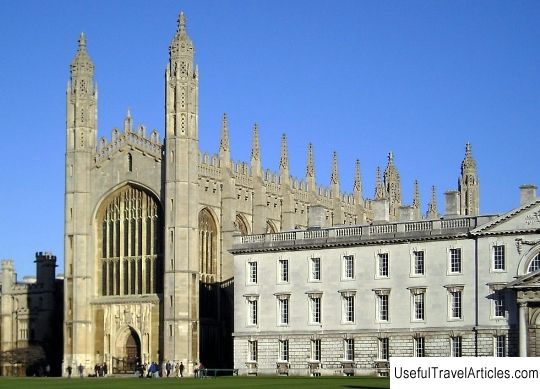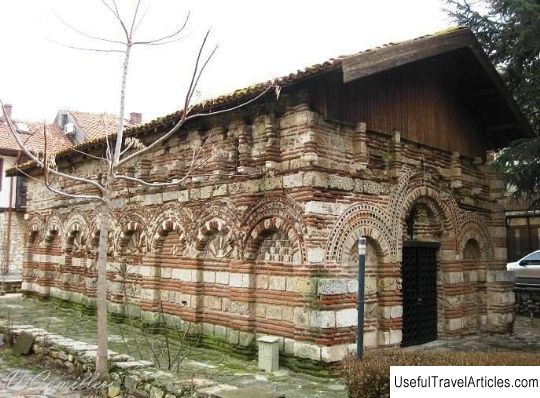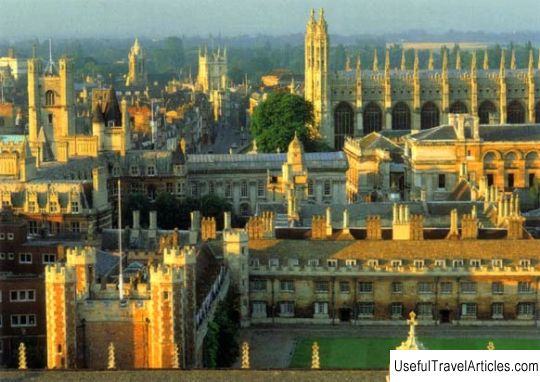King's College Chapel, UK, Cambridge Resort
Rating: 8,1/10 (2661 votes)  King's College Chapel is a masterpiece of English Perpendicular Gothic. This chapel is the recognized symbol of the University of Cambridge.
The construction of the chapel of King's College was started at the behest of the English king Henry VI, who determined the scale of the future structure, in 1444. In the summer of 1446, the king personally laid the foundation stone for the chapel. Further construction was carried out by architects Reginald Ely and Nicholas Cloos. By 1485, when the reign of Richard III ended, despite the war of the Scarlet and White Rose, five tiers of the chapel were completed and roofed.
In 1506, King Henry VII visited the University of Cambridge and financed the completion of the building. He left the money so that construction would continue after his death. Under Henry VIII, in 1515, the construction of the chapel was completed.
During the Civil War of the 17th century, the chapel was used as a training ground for the troops of Oliver Cromwell. There was no major damage to the chapel, because Cromwell was protecting it, because he himself was a student at Cambridge University. However, the soldiers of the parliamentary army left graffiti on the walls of the altar, which can still be seen today. During the Second World War, the chapel's stained-glass windows were removed and hidden; the chapel was again almost unharmed.
Today, the King's College Chapel is used both for its intended purpose and for hosting various celebrations of King's College. For example, the Royal Society of Music hosts a week of concerts every May. This holiday is always popular among students, alumni and guests of the university.
The Chapel of King's College has stunning dimensions (the length of the building is 88 meters, the width of the nave is 12 meters, the height of the vaults is almost 30 meters, the building of the chapel is a rectangular parallelepiped) and is a standard of perpendicular Gothic. The layout of the chapel is not typical for early Gothic buildings, it arose as a result of the technical experience accumulated over time in the construction of church buildings. High window spans are connected by detailed sculptures. This is an exclusively English architectural tradition that has no analogues. The main facade of the chapel is half filled with huge stained-glass windows, and two corner towers set off the facade, reminiscent of the towers of ancient English castles. King's College Chapel is a masterpiece of English Perpendicular Gothic. This chapel is the recognized symbol of the University of Cambridge.
The construction of the chapel of King's College was started at the behest of the English king Henry VI, who determined the scale of the future structure, in 1444. In the summer of 1446, the king personally laid the foundation stone for the chapel. Further construction was carried out by architects Reginald Ely and Nicholas Cloos. By 1485, when the reign of Richard III ended, despite the war of the Scarlet and White Rose, five tiers of the chapel were completed and roofed.
In 1506, King Henry VII visited the University of Cambridge and financed the completion of the building. He left the money so that construction would continue after his death. Under Henry VIII, in 1515, the construction of the chapel was completed.
During the Civil War of the 17th century, the chapel was used as a training ground for the troops of Oliver Cromwell. There was no major damage to the chapel, because Cromwell was protecting it, because he himself was a student at Cambridge University. However, the soldiers of the parliamentary army left graffiti on the walls of the altar, which can still be seen today. During the Second World War, the chapel's stained-glass windows were removed and hidden; the chapel was again almost unharmed.
Today, the King's College Chapel is used both for its intended purpose and for hosting various celebrations of King's College. For example, the Royal Society of Music hosts a week of concerts every May. This holiday is always popular among students, alumni and guests of the university.
The Chapel of King's College has stunning dimensions (the length of the building is 88 meters, the width of the nave is 12 meters, the height of the vaults is almost 30 meters, the building of the chapel is a rectangular parallelepiped) and is a standard of perpendicular Gothic. The layout of the chapel is not typical for early Gothic buildings, it arose as a result of the technical experience accumulated over time in the construction of church buildings. High window spans are connected by detailed sculptures. This is an exclusively English architectural tradition that has no analogues. The main facade of the chapel is half filled with huge stained-glass windows, and two corner towers set off the facade, reminiscent of the towers of ancient English castles.
     We also recommend reading Fitzwilm Museum in the UK, Cambridge Resort Topic: King's College Chapel, UK, Cambridge Resort. |




